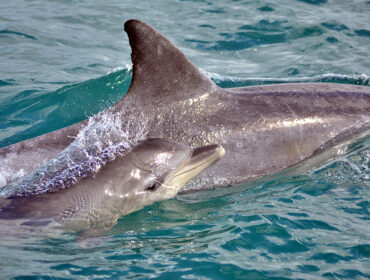Sha’ab Abu Nuhas is a large triangular shaped submerged coral reef northwest of the Red Sea’s largest island, Shadwan Island in the northern Red Sea (Egypt). It is a navigation hazard because it projects into the nearby shipping channel that provides ships access to the Suez Canal. Abu Nuhas has seen its share of shipwrecks, as evidenced by the 5- 7 shipwrecks on it including the four frequently dived wrecks of the SS Carnatic, Kimon M, Chrisoula K and Ghiannis D. Its no wonder that this reef is nicknamed the ship graveyard of the Red Sea, and is visited each year by thousands of scuba divers as day trips from the nearby Hurghada, El Gouna and Sharm El Sheikh or via Liveaboards.
The Carnatic
This British Built 90 meter long, steam engine & wind sail powered vessel was built in 1862 and owned by the Peninsula & Oriental Steamship Navigation Company (today’s P&O Nedlloyd) and sailed through the Suez mostly to India and China. On September 13, 1869, the Carnatic ran into the Reef with 34 passengers as well as a cargo of cotton, copper, £40,000 in Gold coins and wine that was en-route to Mumbai & Calcutta in India. It is said that the crew made it to the Shadwan Island nearby, but 31 died waiting to be rescued. Two months later the gold was recovered by another vessel.
The Carnatic is perhaps the Red Sea’s oldest divable wreck and also the most diver’s favorite wreck. The wreck itself lies on her port side between 27 and 18 meters, and is relatively safe for divers to explore. There are several gaps in its hull where divers can take a peek inside, and spot several cracked wine bottles and other interesting objects, still intact after over a century and a half underwater. The wooden deck of the Carnatic has disappeared over the years and allows plenty of light into the eerie iron ribbed insides.
The Chrisoula K
Built in 1954 the Chrisoula K a Greek registered 98-meter long diesel-powered cargo freighter was carrying a cargo of floor tiles from Italy to the Saudi port of Jeddah in 1981 when it hit the Abu Nuhas Reef and sunk to the bottom at 26m where its rests in an upright position. The bow of the Chrisoula is in just 3m of water and visibility on site is usually very good and this allows divers to see the whole wreck at once making this a great site for underwater photography. The wreck is penetrable and several interior areas can be accessed by scuba divers including the engine room, and the cargo hold where one can see the tiles still in place. The rest of the ship has some remarkable coral growth, and is fascinating to hunt for its inhabitants such as octopus, gobies, scorpionfish and nudibranch. Most wrecks at Abu Nuhas have strong currents and are recommended only for more advanced divers, however the Chrisoula K wreck is more protected from the elements than others on Abu Nuhas and owing to this and its shallow depth, snorkeling is possible at this site.

